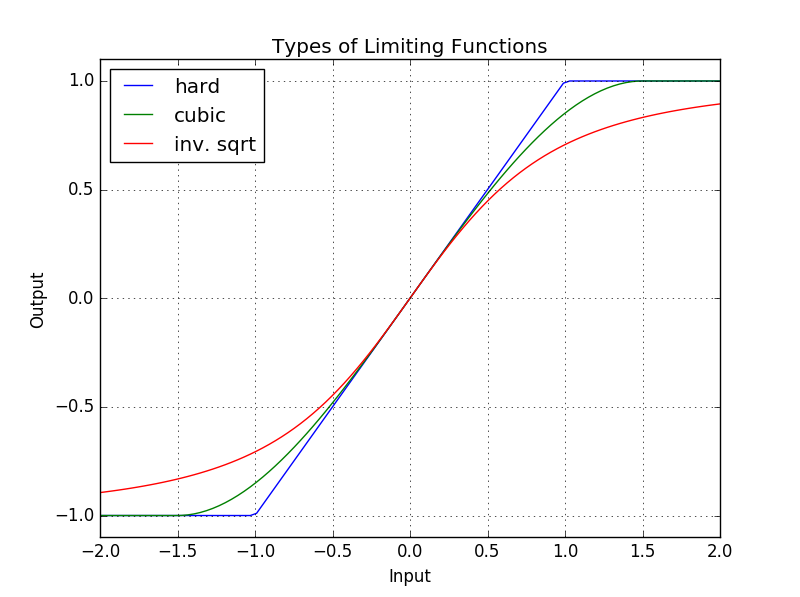Limiter Unit
Soft or hard clip a signal.Overview
This unit implements 3 limiting algorithms: hard, cubic and inverse square root. The hard algorithm adds the most (odd) harmonics while the inverse square root adds the least. Furthermore, there are separate pre-gain and post-gain stages so that you can dial in the exact amount of non-linearity that you desire in the final output.
 | Inserting a Fixed HPF (high pass filter) unit right before a Limiter unit is a great way to maximize dynamic range. The HPF will remove any (inaudible) DC offset which if left alone would reduce the headroom available for higher frequencies. |
 | The opposite of the above tip is to place an Offset unit before a Limiter to cause pre-mature clipping (under CV control) on purpose as a kind of sound design technique. |
 | Whether you use a Limiter or not, signals are always passed through a hard limiter right before being sent out to the DAC (i.e. OUT1-4). |
Some applications are:
- Gain-staging
- Memory-less saturation
- Soft-limiting
- Adding odd harmonics to sinusoidal waveforms (i.e. squaring off or flattening peaks)
- Sound design
- Shaping modulation signals (envelopes and LFOs)
- Taming feedback loops
Parameters
pre
pre-limiting gain
This gain multiplies the signal before the non-linearity affects it.
type
Here you choose from one of the 3 available limiting functions:
Hard Limiting
Any signal above 1 is clipped to 1 and any signal below -1 is clipped to -1.
\[\mbox{CLIP}(x,m) = \begin{cases} -m, & x < -m \\ x, & -m \le x \le m \\ m, & x > m \\ \end{cases}\] \[\mbox{HARD}(x) = \mbox{CLIP}(x,1)\]Cubic Limiting
The input range between -1.5 and 1.5 is mapped to a cubic spline and clipped outside that range in such a way that the first and second derivatives are continuous everywhere (i.e. C2 smoothness).
\[\mbox{CUBIC}(x) = \mbox{CLIP}(x,1.5) - \frac{\mbox{CLIP}(x,1.5)^3}{6.75}\]Inverse Square Root Limiting
The output asymptotically approaches 1 from below and -1 from above. This limiting function is the softest of the three.
\[\mbox{INVSQRT}(x) = \frac{x}{\sqrt{x^2 + 1}}\]post
post-limiting gain
This gain multiplies the signal after the non-linearity affects it.

